Comet Neowise Now Visible From Australia
Comet Neowise - An Observing Guide For Southern Hemisphere Viewers
Comet C/2020 F3 NEOWISE, the brightest comet seen since 2011, has been dazzling observers in the northern hemisphere for the past few weeks after its fiery encounter with the Sun on July 3, when it flew inside the orbit of Mercury.
The comet was closest to the Earth on July 23 at a distance of 103 million kms (or 2/3 the Earth-Sun distance) and will start to fade out as it recedes from Earth and Sun, returning in AD8656.
For viewers at 35 South latitude (including Sydney and Adelaide) the best time to observe comet NEOWISE will be at 6:30pm to 7pm local time, before the comet sets.
You will need a clear view of the horizon to the north-west, away from streetlights and cities/towns. Viewers in Melbourne will see the comet 3 degrees lower than the chart. Viewers in Perth will see the comet 3 degrees higher than the chart. Viewers in Brisbane will see the comet earlier and higher, although light pollution will be a serious problem for city dwellers!
The comet will gain altitude over the north-western horizon each night but will continue to fade. To view the comet, I recommend using a pair of binoculars or even a telescope. This will aid in seeing the comets tail. To photograph the comet, you will need a tripod mounted camera capable of long exposure (30 seconds, or bulb with timer). To take longer exposures with a zoom lens, I use a Skywatcher Star adventurer mount. Unfortunately, moonlight will interfere with the view, until after the full moon of August 4th. The comet will fade from 4th magnitude to 6th magnitude over the 2 week period.
The chart shows the comets position each night for the 2 week period. Note close approach to the Coma Berenices star cluster Melotte 111 on July 31-Aug 1, making for a terrific photo opportunity. This cluster has a shape of a coat hanger tipped over to its side.
Telescopes To Use To See The Comet
- SWDob76
- SW130AZGTE
- SWDOB150p
Telescopes Mounts To Use To See The Comet
- Sky-Watcher HEQ5PRO-DUAL and SWBDED80
- Sky-Watcher Star Adventurer Pro Kit combined with you your DSLR

